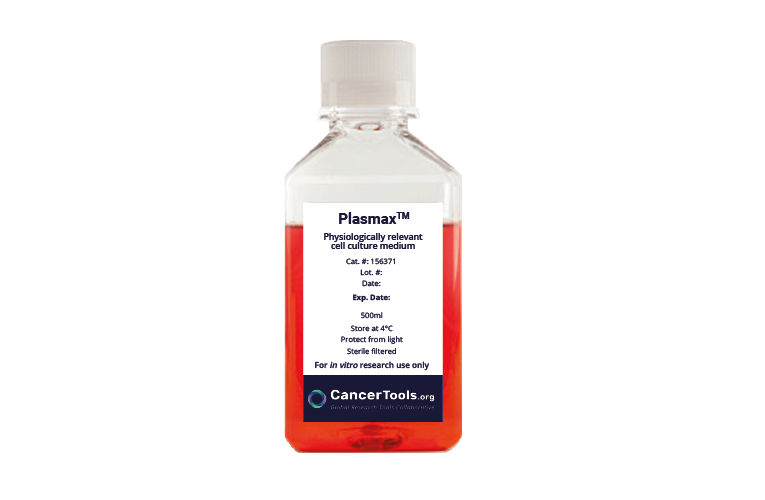
To further support cell growth in natural and a physiologically relevant environment, we at CancerTools.org are introducing a glucose-free version of Plasmax to complement the original Plasmax formulation.
This defined medium is unique in offering a glucose-free formulation that opens up possibilities for tailored experimental conditions in cancer and cell biology research. It can support a applications including glucose starvation experiments, tumour microenvironment and cancer metabolism studies, metabolic tracing of glucose incorporating stable isotopes (e.g. 13C), etc. which could shed light on critical pathways and mechanisms underlying cancer cell metabolism and glucose utilisation.
While this glucose-free PlasmaxTM eliminates glucose from its formulation, it still preserves the original optimised composition of PlasmaxTM derived from over 80 components. These constituents encompass amino acids and derivatives, inorganic salts, trace elements, and vitamins, with more than 50 components present at levels mirroring those found in human plasma. Hence, the formulation ensures cultured cells closely mimic physiological and metabolic profiles of their in vivo counterparts.
Proven to provide tailored experimental conditions in a physiologically relevant environment, glucose-free PlasmaxTM can support research projects aimed at advancing cancer research and associated metabolic studies.









